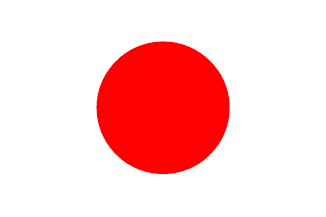 |
 |
PART 4 |
Saturday 1 June 2013
Nagano - Tōkyō: 222km (138mi), 1:46 hrs (train)
We take the Shinkansen Asama to Tōkyō Station. It takes more than an hour
and a 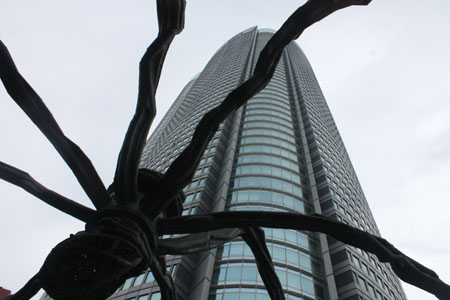 half
on the train and the train gets up to a speed of to 200 km / h. In Tōkyō we
change to a local train (Yokosuka) to Shinjuku Station. From that enourmous
station it is a 10 minute walk to the
Best Western Astina hotel.
We can not get into the room at this moment (12pm) , so we just go outside
to eat. We go easy and choose the Burger King. After that we walk to the
Shinjuku Park. That is a beautiful park with a French part and a Japanese
section, at least as far as the landscaping is concerned. From the park you
can see the skyscrapers of Shinjuku in the background. At 2pm we can check
into our room. We take a break before we hit the road again at 4pm taking
the TOEI-subway to
Roppongi Hills.
half
on the train and the train gets up to a speed of to 200 km / h. In Tōkyō we
change to a local train (Yokosuka) to Shinjuku Station. From that enourmous
station it is a 10 minute walk to the
Best Western Astina hotel.
We can not get into the room at this moment (12pm) , so we just go outside
to eat. We go easy and choose the Burger King. After that we walk to the
Shinjuku Park. That is a beautiful park with a French part and a Japanese
section, at least as far as the landscaping is concerned. From the park you
can see the skyscrapers of Shinjuku in the background. At 2pm we can check
into our room. We take a break before we hit the road again at 4pm taking
the TOEI-subway to
Roppongi Hills.
Tokyo has two separate subway networks:
Tokyo Metro
and
TOEI. In
addition to that, there are the regional JR lines and some private
railways. At major hubs the subway networks intersect, as they do at
Shinjuku. They also have separate card systems, but there is also a day
ticket on sale that is valid for both subway systems and the bus network
(¥ 1,000). Both JR and the subway systems accept all major types of
Public Transport smart cards (Suica, Pasmo, Icoca etc). You can also buy
single tickets. In that case do not buy a ticket from A to B, but a
ticket of a certain value, eg 240 yen. On the network map hanging above
the ticket machine you can see what is the fare to each station from
where you are. If you have purchase
has two separate subway networks:
Tokyo Metro
and
TOEI. In
addition to that, there are the regional JR lines and some private
railways. At major hubs the subway networks intersect, as they do at
Shinjuku. They also have separate card systems, but there is also a day
ticket on sale that is valid for both subway systems and the bus network
(¥ 1,000). Both JR and the subway systems accept all major types of
Public Transport smart cards (Suica, Pasmo, Icoca etc). You can also buy
single tickets. In that case do not buy a ticket from A to B, but a
ticket of a certain value, eg 240 yen. On the network map hanging above
the ticket machine you can see what is the fare to each station from
where you are. If you have purchase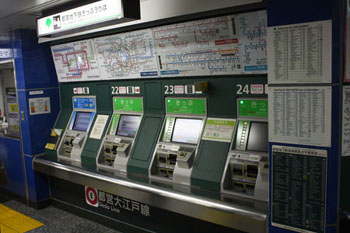 d
a ticket of insufficient value you can pay the difference at a fare
adjustment machine at the destination station. The machine calculates
what you owe.
d
a ticket of insufficient value you can pay the difference at a fare
adjustment machine at the destination station. The machine calculates
what you owe.
The subways are very efficient, fast and frequent. Signs are in Japanese and English and also announcements in the trains are bilingual. In the most modern trains the on board information displays not only tell you the next stop (s) and transfers, but also in which car of the train you are and where the stairways and exits of the next station will be, relative to your position. We planned our subway trips using the MetrO App or the Tokyo Metro Subway (both free).
At
the heart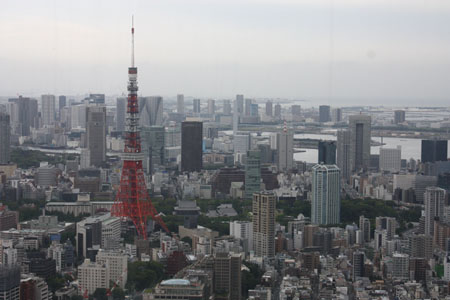 of Roppongi Hills is the Mori Tower, a modern skyscraper of 54 floors. The
uppermost floors are taken by the
Mori Art Centre and the
Tōkyō City
View Observatory. The view is breathtaking. From the top
you get a good picture of the structure of the city with its many centers
around rail hubs. We also see a major highway, the Shuto-expressway across
and over the city and a few large parks, such as Shinjuku park, Yoyogi Park
and the park surrounding the Imperial Palace. In the distance we see the
silhouette of Mount Fuji. A mysterious sight. We drink a cocktail
overlooking the city.
of Roppongi Hills is the Mori Tower, a modern skyscraper of 54 floors. The
uppermost floors are taken by the
Mori Art Centre and the
Tōkyō City
View Observatory. The view is breathtaking. From the top
you get a good picture of the structure of the city with its many centers
around rail hubs. We also see a major highway, the Shuto-expressway across
and over the city and a few large parks, such as Shinjuku park, Yoyogi Park
and the park surrounding the Imperial Palace. In the distance we see the
silhouette of Mount Fuji. A mysterious sight. We drink a cocktail
overlooking the city.
Then
we rush with the TOEI-subway back to Shinjuku. We eat at the Golden Gai, a
small ramshackle neighborhood behind our hotel. These are five streets with
low-rise wooden buildings, where tiny bars and restaurants are sitting door
to door. Very popular at night. We are a bit early and find a spot in a
restaurant where we are assigned our own booth.
Later in the evening we go out to the gay district of Shinjuku-nichome. Some
bars are so small that the punters spill out over the street. It will be a
fun evening.
Weather: Cloudy, 23°C/73°F
Sunday 2 June 2013
Tōkyō -
Kamakura: 58km (39mi), 58 min (train)
After an extensive buffet breakfast in the hotel we take the JR
Shonan-Shinjuku
 Line
to Kamakura. This is about an hour’s journey. For the first
time in Japan we have to deal with a delay of 5 minutes. The train makes up
for it during the ride. The route runs through Yokohama, the port, adjacent
to Tokyo. In Kamakura we ask at the Tourist Information for the best way to
get to the
Daibutsu, the
great Buddha. By bus (#1 or #6) it takes ten minutes, what otherwise would
be an hour’s walk. It is a beautiful sight. The Buddha is about 15 meters
high and sits meditating on a pedestal. The Buddha statue is almost 800
years old and it's amazing how they make it from bronze plates at that point
of time. You can also go and see the construction from the inside. The
statue is part of the Kotoku-in Temple. We then walk to another sanctuary,
the
Hase-Dera
Temple. Here is the Kannon covered with gold leaf, which according to
legend was washed ashore in 736 and should be one of two images cut from
Line
to Kamakura. This is about an hour’s journey. For the first
time in Japan we have to deal with a delay of 5 minutes. The train makes up
for it during the ride. The route runs through Yokohama, the port, adjacent
to Tokyo. In Kamakura we ask at the Tourist Information for the best way to
get to the
Daibutsu, the
great Buddha. By bus (#1 or #6) it takes ten minutes, what otherwise would
be an hour’s walk. It is a beautiful sight. The Buddha is about 15 meters
high and sits meditating on a pedestal. The Buddha statue is almost 800
years old and it's amazing how they make it from bronze plates at that point
of time. You can also go and see the construction from the inside. The
statue is part of the Kotoku-in Temple. We then walk to another sanctuary,
the
Hase-Dera
Temple. Here is the Kannon covered with gold leaf, which according to
legend was washed ashore in 736 and should be one of two images cut from the same piece of a camphor tree. The wooden statue is 9 meters high and one
of the largest wooden statues in Japan. In two adjacent halls we see an
image of an Amidha Budha, respectively, a copy of an image of Daikoku-ten,
the god of wealth. From the terrace we have a nice view of the sea and the
beach. We leave the temple and walk to the beach. Here we see many surfers
and fishermen in action. There is a stiff offshore wind, which makes it
difficult for the novice surfers to come back. We eat a burger at a
restaurant overlooking the water. From there we take a tram back to the
Kamakura station and then continue by train to Shinjuku.
the same piece of a camphor tree. The wooden statue is 9 meters high and one
of the largest wooden statues in Japan. In two adjacent halls we see an
image of an Amidha Budha, respectively, a copy of an image of Daikoku-ten,
the god of wealth. From the terrace we have a nice view of the sea and the
beach. We leave the temple and walk to the beach. Here we see many surfers
and fishermen in action. There is a stiff offshore wind, which makes it
difficult for the novice surfers to come back. We eat a burger at a
restaurant overlooking the water. From there we take a tram back to the
Kamakura station and then continue by train to Shinjuku.
Around 4 pm we take the subway to Yoyogi Park. We get off
at Yoyogi-koen. That turns out to be less than convenient. We had better get
off at Harajuku instead. After a walk through the blazing sun we get to the
park entrance. In Yoyogi on a Sunday afternoon
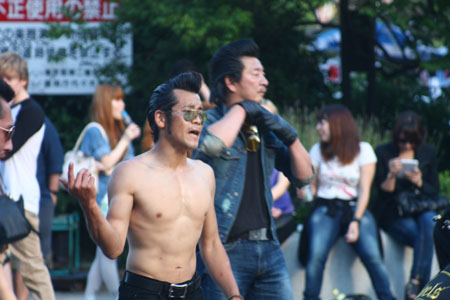 we
see Tokyo at play. Many come here to picnic and people who think
they have a musical or theatrical talent a brave enough to do performances.
Very lively and fun to watch. A group of aged rockers, complete with quiff
and leather outfit try their best at rock'n roll dancing.
we
see Tokyo at play. Many come here to picnic and people who think
they have a musical or theatrical talent a brave enough to do performances.
Very lively and fun to watch. A group of aged rockers, complete with quiff
and leather outfit try their best at rock'n roll dancing.
We
take the subway back. In the evening we have dinner in the Golden Gai. Now
at a place that only serves rice sticks and has an English menu.
Weather: Hot and sunny. 23-25°C/73-77°F. In the evening it cools down
quickly to 19°C/66°F.
Monday 3 June 2013
We take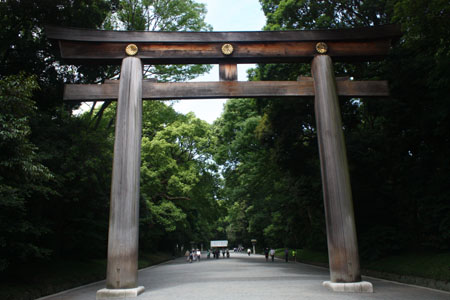 the subway to Harajuku station, or rather Meiji Shibuya
subway station. We walk over a viaduct across the railway tracks into a
park. We immediately see a large torii, which marks the beginning of a
number of broad avenues through a forest, leading to the
Meiji Shrine. In
this shrine the souls of Emperor Meiji and his wife have been enshrined.
This emperor led the large-scale modernization of the country towards the
end of the 19th century. He removed the Tokugawa shoguns, who had held the
country in isolation for two centuries and were unable to resist to the
American pressure for free trade and intervention. The Emperor moved his
court from Kyoto to Edo, which was renamed Tokyo and centralised power in
his own hands. Foreign industrialists were brought to Japan to set up
industries. Western clothing and eating habits were introduced, while
retaining Japanese values and traditions. By the early 20th century Japan
had a earned itself a prominent place on the world stage. In this shrine his
soul is seen to be kept alive. The shrine is
the subway to Harajuku station, or rather Meiji Shibuya
subway station. We walk over a viaduct across the railway tracks into a
park. We immediately see a large torii, which marks the beginning of a
number of broad avenues through a forest, leading to the
Meiji Shrine. In
this shrine the souls of Emperor Meiji and his wife have been enshrined.
This emperor led the large-scale modernization of the country towards the
end of the 19th century. He removed the Tokugawa shoguns, who had held the
country in isolation for two centuries and were unable to resist to the
American pressure for free trade and intervention. The Emperor moved his
court from Kyoto to Edo, which was renamed Tokyo and centralised power in
his own hands. Foreign industrialists were brought to Japan to set up
industries. Western clothing and eating habits were introduced, while
retaining Japanese values and traditions. By the early 20th century Japan
had a earned itself a prominent place on the world stage. In this shrine his
soul is seen to be kept alive. The shrine is
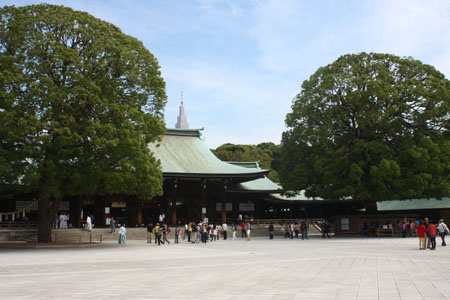 a
grand building set around a vast courtyard. There are big statues. Visitors
throw a coin into the collecting box, clap their hands and say their prayer.
As in so many sacred places in Japan, the sanctuary itself may not
photographed. We look around and walk back to the Harajuku station, which is
decorated in a kind of fake Tudor style. We walk north and pass a soccer
store, where all possible attributes and football paraphernalia are sold.
Outfits of the Japanese national team, J-league teams and foreign clubs and
countries. The Netherlands is represented with large wall posters of
Huntelaar, Sneijder and Van der Vaart. There is also an orange shirt with
Sneijder’s name. We walk a little further and turn right into Takeshita-dori
where teenagers are spoilt for choice when it comes to screamingly coloured
clothing and accessories. Then we turn right onto Om
a
grand building set around a vast courtyard. There are big statues. Visitors
throw a coin into the collecting box, clap their hands and say their prayer.
As in so many sacred places in Japan, the sanctuary itself may not
photographed. We look around and walk back to the Harajuku station, which is
decorated in a kind of fake Tudor style. We walk north and pass a soccer
store, where all possible attributes and football paraphernalia are sold.
Outfits of the Japanese national team, J-league teams and foreign clubs and
countries. The Netherlands is represented with large wall posters of
Huntelaar, Sneijder and Van der Vaart. There is also an orange shirt with
Sneijder’s name. We walk a little further and turn right into Takeshita-dori
where teenagers are spoilt for choice when it comes to screamingly coloured
clothing and accessories. Then we turn right onto Om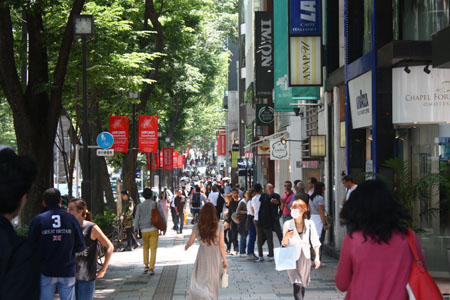 otesando-dori.
This major shopping street with its beautiful trees is a great contrast to
the eye sores for the young we have just seen . We buy some clothes at the
Nike store and admire the flagship stores of Gucci, Tommy Hilfiger, Chanel,
Dior etc, etc. We have lunch at a sushi conveyor belt restaurant, where we
the entire staff shout words of welcome in unison when we enter. After lunch
we carry on crossing the Aoyama-dori. The street becomes a lot narrower and
a bit beyond the Issy Myake shop Prada’s shopping paradise comes into view
in the form of a glass column. A spiral walkway takes us along mainly
women’s clothes and bags. Only the shoe
otesando-dori.
This major shopping street with its beautiful trees is a great contrast to
the eye sores for the young we have just seen . We buy some clothes at the
Nike store and admire the flagship stores of Gucci, Tommy Hilfiger, Chanel,
Dior etc, etc. We have lunch at a sushi conveyor belt restaurant, where we
the entire staff shout words of welcome in unison when we enter. After lunch
we carry on crossing the Aoyama-dori. The street becomes a lot narrower and
a bit beyond the Issy Myake shop Prada’s shopping paradise comes into view
in the form of a glass column. A spiral walkway takes us along mainly
women’s clothes and bags. Only the shoe
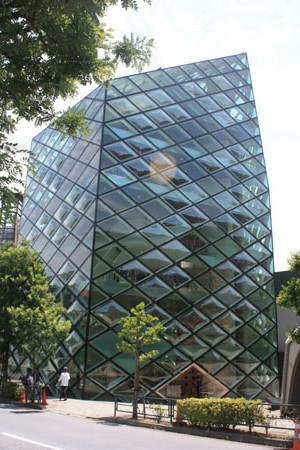 department
caters for men. But at a thousand euros a pair, we give it a miss. We take
the subway back to the hotel.
department
caters for men. But at a thousand euros a pair, we give it a miss. We take
the subway back to the hotel.
Later in the afternoon we have a look at the Isetan department store near the hotel. It is a very prominent shop, a bit like Harrod's of London, where all the expensive brands have their shop. The store was founded in 1886 here in Tokyo, but now has branches in many Japanese cities, but also in Singapore and Malaysia. There is plenty of staff, immediately making a courtesy bow as we pass. We are impressed by the range of goods. Men’s wear and accessories of all leading brands, Western and Japanese, are found in a separate men's building. There is even a separate department for tall people (up to 195cm). After all this fashion furore we go to the roof of the women's building (on the men's building there is a golf school). Here we find a very peaceful garden, where shoppers just sit down and have a rest beside a lawn that is trimmed nail scissors. There is also a Shinto shrine, so the gods can also come into their own. One floor down we go for a drink on a roof terrace. Wine, cocktail and a light snack for 2400 yen. Early evening we go to Shibuya, a busy railway junction with high-rise buildings and shops. We eat a bit first in a curry joint (first get a ticket from the vending machine) and then take a vantage point on walking bridge overlooking the busy intersection where masses of pedestrians cross the intersection diagonally every minute or so. A fascinating sight. After shooting some video footage we have coffee with a view on the massive traffic.
Weather: cloudy and chilly initially, then sunny and warm 25°C/77°F
Tuesday 4 June 2013
I get up early
- at 5.15 am - to go to the
Tsukiji
Fish Market. The subway is still dead quiet. I take the TOEI-subwy to
the Tsukiji-Shijo stop. In the market area heaving with activity. Electric
carts are racing back and forth. After some searching I find the wholesale
market hall, where wholesalers sell to restaurants and shops. After a while
I am accosted by a security guard who tells me that entry is only allowed
after 9am and photography is prohibited. I'm going, but fortunately I have
made my pictures already. Along the edge of the area there are a number of
small fish restaurants for which tourists stand in long queues to get a
place inside. Here you eat the catch of the day. Completely out of bounds is
the auction area, where the huge Bluefin tuna sells for astronomical amounts
(up to 100 euros per kilo). Outside the market area I see an ordinary fish
and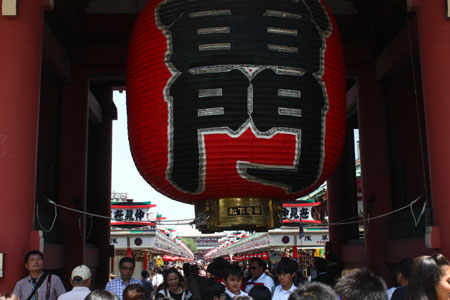 vegetable market. I'm going back to the hotel to shower and have breakfast.
vegetable market. I'm going back to the hotel to shower and have breakfast.
We take the subway to Asakusa, to look for the big
Senso-ji
temple from the 7th century. It's very busy, especially with school
classes. Rickshaw drivers offer their services, but understandably not to
us. We look at the temple and Shinto shrine behind it, that gets much less
attention. The temple is built around an image of the Bodhisattva Kannon,
according to legend in the year 628 by two fishermen from the sea
exhaustion. The image is not visible to the public, because the monk who has
built the temple, was told so by the gods in a dream. The temple is one of
the oldest in Japan and receives 30 million visitors annually. We walk
around in Asakusa and have lunch in air conditioned restaurant. Outside it
is already scorching hot. After lunch we walk to the river near the Asakusa Subway Station and buy tickets for the water / river cruise from
Tokyo
Cruise, which departs from AzumaBashi Bridge in the direction of
the Hinode pier. At the bridge, we see the Skytree, the brand new lookout
and TV tower of Tokyo. In front of it we see the Asahi building donned with
the golden flame designed by Philppe Starke. We sail down the river passing
a dozen bridges. All different and based on examples elsewhere. We
eventually see in the distance the typical Fuji TV building with the
suspending sphere. From Hinode pier we take the New Transit, an unmanned
monorail to Shiodome, where we transfer to the Oedo line to Shinjuku.
Asakusa Subway Station and buy tickets for the water / river cruise from
Tokyo
Cruise, which departs from AzumaBashi Bridge in the direction of
the Hinode pier. At the bridge, we see the Skytree, the brand new lookout
and TV tower of Tokyo. In front of it we see the Asahi building donned with
the golden flame designed by Philppe Starke. We sail down the river passing
a dozen bridges. All different and based on examples elsewhere. We
eventually see in the distance the typical Fuji TV building with the
suspending sphere. From Hinode pier we take the New Transit, an unmanned
monorail to Shiodome, where we transfer to the Oedo line to Shinjuku.
In the evening we eat Chinese in a tiny eatery, Shanghai Xihaochi not far from our hotel. It is in a very narrow alley and only with the information from our Rough Guide and helped by Google Maps we know how to find it. The service is as basic as it gets and without the Japanese courtesies. They are apparently wasted on the Chinese. We order from a book with pictures and get some clarification by a staff member who has a smartphone. I eat a bird (to later turns out to be a pigeon) and Erik something with pork. It tastes just fine.
Weather: sunny, 27°C/80°F
Wednesday 5 June 2013
We
take the metro to Nijubashi mae. From there it is a short walk to the gates
of the imperial palace, situated inside a large green
enclave in the middle of the city. The area between the subway station and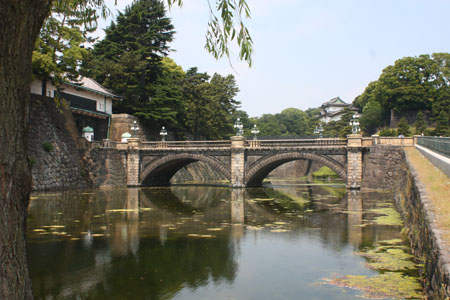 the gate is free of any development and we walk unprotected from the sun
towards the palace. The only thing we get to see is the moat of the palace,
a fortress wall, two bridges and a beautiful 17th century castle tower. The
palace is open to visitors, but you have to apply months in advance. Tours
are in Japanese and foreigners get an English-language brochure. The guards
are changed with remarkably little ceremony. We walk along the moat and then
turn right into down town along the government departments. We take the
subway to Ginza, the fashionable shopping district of central Tokyo. Here we
have a drink, before we visit the
Sony Building. Here we
find the latest gadgets of this brand, including 4K TV that has 4x the
resolution of a regualar full HD TV, but with a screen of 84 inches! – we
are told by a young man from Sony in perfect English. There is much more to
see, but no items that we do not know. The presentation is beautiful and the
staff is professional. After Sony we walk on Harumi-dori to the
Matsukoshi
department store. This is the most prestigious department store in Japan. We
buy a gift for friends and have lunch there on the top floor. Diagonally
opposite the department store is a building with a large Seiko clock on the
roof. More than a century ago a jeweler started selling this watch brand,
which means precision. The clock
from 1894 is a landmark. We take a taxi to the corner of the Yaesu-dori and
Chuo-dori. There is the monument to the Dutch merchant Jan Joosten
Lodenstein (1556-1623),
the gate is free of any development and we walk unprotected from the sun
towards the palace. The only thing we get to see is the moat of the palace,
a fortress wall, two bridges and a beautiful 17th century castle tower. The
palace is open to visitors, but you have to apply months in advance. Tours
are in Japanese and foreigners get an English-language brochure. The guards
are changed with remarkably little ceremony. We walk along the moat and then
turn right into down town along the government departments. We take the
subway to Ginza, the fashionable shopping district of central Tokyo. Here we
have a drink, before we visit the
Sony Building. Here we
find the latest gadgets of this brand, including 4K TV that has 4x the
resolution of a regualar full HD TV, but with a screen of 84 inches! – we
are told by a young man from Sony in perfect English. There is much more to
see, but no items that we do not know. The presentation is beautiful and the
staff is professional. After Sony we walk on Harumi-dori to the
Matsukoshi
department store. This is the most prestigious department store in Japan. We
buy a gift for friends and have lunch there on the top floor. Diagonally
opposite the department store is a building with a large Seiko clock on the
roof. More than a century ago a jeweler started selling this watch brand,
which means precision. The clock
from 1894 is a landmark. We take a taxi to the corner of the Yaesu-dori and
Chuo-dori. There is the monument to the Dutch merchant Jan Joosten
Lodenstein (1556-1623),
who
with his English first officer William Adams (1564-1620) arrived in Japan in
1600 with the ship De Liefde
(Love), on which he left Rotterdam two years earlier. Lodenstein settled in
Japan, marking the start of a 200-year-long exclusive trading relationship.
In 1609 a VOC trading post was opened in Hirado, which later was moved to
Dejima. William Adam's story is
at the centre of James Clavell's 1975 novel "Shogun", which was adapted in
1980 into a TV-series.
The text on the monument
is both in Japanese and Dutch. Yaesu is the Japanese name for Jan Joosten,
and is the name for both this wide avenue and the neighbourhood. We take the
train from Tokyo Station back to Shinjuku. There we buy tickets for the
Narita Express (train to the airport) for coming Friday.
In the evening we have dinner first at an Italian basement restaurant. Again no English menu, but with the iPhone we come a long way. The waitress types the keywords on the Japanese keyboard and the phone translates. We have fine meal, but apparently we eat it quickly for Japanese standards, as we are asked if we were very hungry. Then we go for a drink at the Dragon Men, the gay bar where we were already on Saturday. It is a lot quieter now. We move on to bar Kusuo. This one is on the 3rd floor of a building and the elevator is in a side street. When we get the bar is almost empty. After an hour it fills up and the party can begin. Several men and boys take the microphone for karaoke! Small consoles with Mic have been put on the tables. On the screen, you can pick a title and determine the pitch. The music is played and the lyrics are shown on the big screen. Nice to do with it.
Weather: sunny and warm. 27°C/80°F.
Thursday 6 June 2013
We take the metro to the Shimbashi station. There we change to the unmanned
monorail, which is called
New Transit
here. That takes us over the impressive double deck suspension bridge,
the Rainbow Bridge to Odaibo. Odaibo is an artificial
island, where the metropolitan governmen is developing a 21st century
neighbourhood. In the 1990's when the project began, Japan was in a deep
crisis, real estate development had all but stopped. Since then things have
picked up and the area is pretty full now. The monorail winds its way
through the area along striking architectural masterpieces, including the
exhibition centre
Big Sight
and conspicuous building of Fuji TV (architect Kenzo Tange). We are going
to the Ariake stop, where the Panasonic Center is. It is
much larger than the Sony building. Apart from celebrating everything
Panasonic it also functions as an educational attraction for high school
students with all sorts of show cases of physics and mathematics. We go back
on the monorail, this time to the Aomi stop. Here is a shopping bastion
called Venus, which is designed
the metro to the Shimbashi station. There we change to the unmanned
monorail, which is called
New Transit
here. That takes us over the impressive double deck suspension bridge,
the Rainbow Bridge to Odaibo. Odaibo is an artificial
island, where the metropolitan governmen is developing a 21st century
neighbourhood. In the 1990's when the project began, Japan was in a deep
crisis, real estate development had all but stopped. Since then things have
picked up and the area is pretty full now. The monorail winds its way
through the area along striking architectural masterpieces, including the
exhibition centre
Big Sight
and conspicuous building of Fuji TV (architect Kenzo Tange). We are going
to the Ariake stop, where the Panasonic Center is. It is
much larger than the Sony building. Apart from celebrating everything
Panasonic it also functions as an educational attraction for high school
students with all sorts of show cases of physics and mathematics. We go back
on the monorail, this time to the Aomi stop. Here is a shopping bastion
called Venus, which is designed
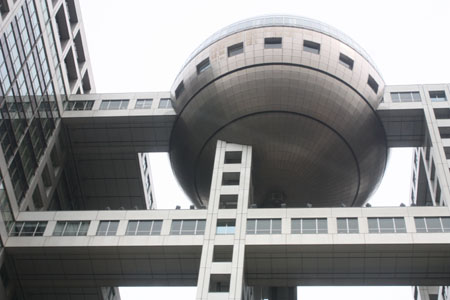 in
an Italian style. No daylight, but the ceilings are painted with a
Mediterranean sky fresco. We eat a pizza and pay a visit at the Toyota
exhibition of historic cars. For a moment it seems like the staff offered to
drive one of the cars, but that is a misunderstanding. We can only sit in
it. Next is a visit to Megaweb-hall, Toyota’s showcase of
its current models. We take a ride in a simulator, which we has to make us
feel the difference between ordinary and Toyota suspension. Finally we watch
a movie in a cinema with moving seats. The test track with electric cars is
closed for maintenance and design studio is closed. That is disappointing.
We go back to the hotel.
in
an Italian style. No daylight, but the ceilings are painted with a
Mediterranean sky fresco. We eat a pizza and pay a visit at the Toyota
exhibition of historic cars. For a moment it seems like the staff offered to
drive one of the cars, but that is a misunderstanding. We can only sit in
it. Next is a visit to Megaweb-hall, Toyota’s showcase of
its current models. We take a ride in a simulator, which we has to make us
feel the difference between ordinary and Toyota suspension. Finally we watch
a movie in a cinema with moving seats. The test track with electric cars is
closed for maintenance and design studio is closed. That is disappointing.
We go back to the hotel.
In the afternoon I have a look at BIC Camera, a major electronics super store at the Shinjuku station. Impressive range of a electronics and cameras, but not much different than we have back home. In the evening we have dinner at a sushi restaurant in our street. Great sushi, served at the bar.
Friday 7 June 2013
We
get up early. At 6.15 am we are outside the hotel and walk to the Shinjuku
station. Our train departs at 6:55am from platform 5.
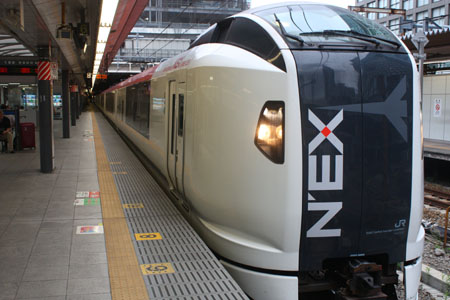 The
Narita-express
(reserved seats only) or N'EX run by JR East will take us to the airport
in an hour and twenty minutes. A check-in machine gives our boarding cards
and we then drop off our luggage. We clear security, which is fairly strict.
The duty free shops are not up to much, but we manage to spend our last yen.
Even the value remaining on our public transport chip cards can be spent
here. We fly with a 747-400 KLM to Amsterdam. We take off a little later
than the scheduled 10:35, but arrive twenty minutes earlier than planned.
The
Narita-express
(reserved seats only) or N'EX run by JR East will take us to the airport
in an hour and twenty minutes. A check-in machine gives our boarding cards
and we then drop off our luggage. We clear security, which is fairly strict.
The duty free shops are not up to much, but we manage to spend our last yen.
Even the value remaining on our public transport chip cards can be spent
here. We fly with a 747-400 KLM to Amsterdam. We take off a little later
than the scheduled 10:35, but arrive twenty minutes earlier than planned.
|
|
Other Travel | |
| Back | Foto-Album Japan |